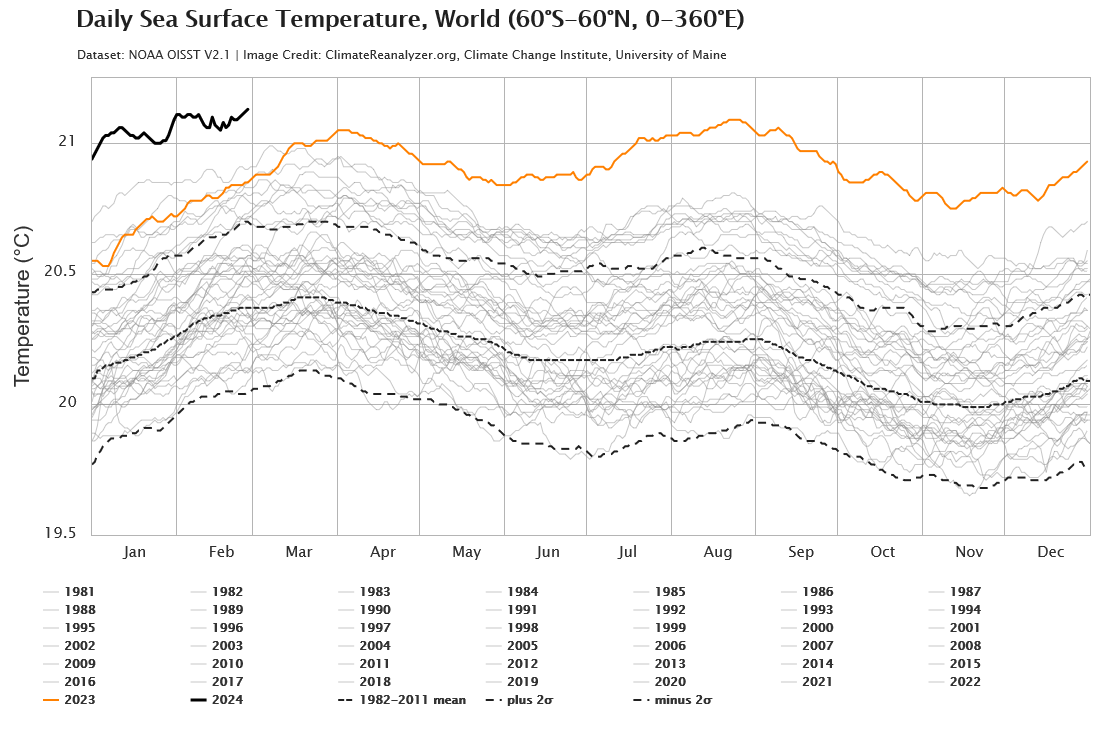What's happening with sea temperatures
Reading time: 2 minutesTL;DR
It’s not just the air, the oceans and seas are getting hotter too.
That means more rain and snow. It’s also bad for corals, fish and lots of living things.
Explanation
Check out the latest charts right here.
At the time of writing, the chart looked like this.
According to NASA, ninety percent of global warming is in the ocean.
Delicate biological systems such as the Great Barrier Reef are sensitive to increased temperatures. Have you ever had a tropical aquarium? Those things need to be kept at the right temperature and the water levels right or the fish die. Due to seasonal changes in the weather, of course there’s hot days and cooler days. If the base temperature increases, then hot days are far more likely to cause a coral bleaching event - which kills off the coral. Over time as the oceans get hotter and hotter, the time between bleaching events decreases and the coral doesn’t have time to recover. Eventually it dies off.
At the global scale we are increasing the temperatures and also causing the pH levels of the ocean to change. As the CO2 is absorbed by the oceans it changes the pH level which in turn affects things like corals, so it’s not just bleaching to be worried about. They call this ocean acidification.
At some point the oceans will also stop absorbing CO2, they will be saturated. We will then see the atmospheric CO2 ppm rise even more rapidly.
Warmer oceans also lead to more extreme weather events. Yes we’ve always had hurricanes, cyclones, storms but with warmer oceans more water is evaporated and carried into these systems. It then comes down in record amounts of causes ridiculous flooding events.
Those catastrophes aside, changing ocean temperatures also impact the fishing grounds. Fishermen who go out to sea are finding their catches are changing or disappearing. Sometimes they can follow the fish and go to different areas, but eventually they are too far away. Fishing towns can’t just pack up and move to a different area overnight. This is an example of the disruption of climate change is impacting faster than we can adapt to. In the end fishermen go broke and people go hungry.
Further reading
Vital Signs - Ocean Warming (NASA)
The disappearing fishing villages of Bangladesh
Going fishing in a changing climate
Impacts on fish, fishing communities and food security
Sydney rock oyster farmers in hot water as marine heatwave leads to closure of Merimbula Lake 14 March 2024
